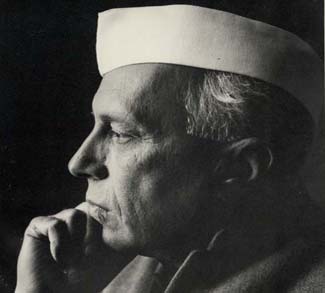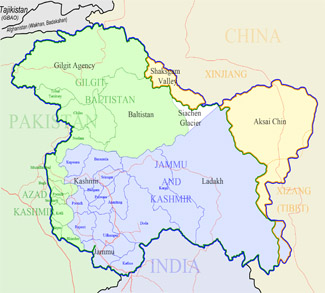In one of largest counter-terrorist operations in the history of India, the National Investigation Agency swooped in and arrested 14 Islamic State operatives and sympathizers across India on January 22 and 23.
Though there are conflicting reports as to the exact number of arrests made and their detention status, some sketchy details have been seeping out.
Six operatives, namely Mohammed Ahad, Mohammed Afzal, Syed Mujahid, Asif Ali, Suhail Mohammed, and Najmul Huda are from Karnataka; four operatives, namely Mohammed Shareef, Mohammed Nafees, Abu Anas, and Mohammed Obedullah are from Telangana; three operatives, namely Mudabbir Mushtaq Shaikh, Khan Muhammed Hussain, and Imran khan Pathan are from Maharashtra; and finally Mohammed Aleem from Uttar Pradesh – all of these people have either been arrested or detained with respect to their links to the Islamic State.
These arrests closely follow the arrest of four operatives of the Islamic State in the Indian state of Uttarakhand a couple of days prior to this crackdown. The special cell of Delhi police arrested Akhlaq ur-Rahman, Mohammed Osama, Mohammed Azim Shah, and Mehroz, who were alleged to have links with the Islamic State. This Islamic State module had planned to carry out attacks on some spiritual places, trains, and malls in Delhi. The arrests follow the May 2015 arrest of a module in Ratlam which was loosely connected to the Islamic State.
These groups were handled by an Indian Islamic State operative in Syria known by his nom de guerre, Yusuf-al-Hindi, who is ostensibly Shafi Armar, the younger brother of Sultan Armar, who died fighting for Islamic State in Syria last year.
These arrests and linkages have heightened the sense of trepidation, and set the cat among the pigeons within the security establishment in India for a variety of reasons.
Firstly, these arrests highlight an emerging recruitment pattern linked to the Islamic State, which has not been witnessed in India. Earlier instances of recruitment for Islamic State in India pertained to the flow of potential recruits moving outwards from India, who were either travelling to Syria or Iraq. However, in direct contrast, the current arrests buttresses the theory that the Islamic State is in the process of setting up sleeper cells within India, ostensibly to carry out terror attacks within India. This attempt by the Islamic State is a marked departure from its earlier attempts to move recruits from India to Syria or Iraq.
Secondly, linkages between various groups and Islamic State exacerbates the threat perception further as Islamic State will have readily available human, financial, and logistical resources within India to work with. For instance, the involvement of Shafi Armar as the principal recruiter in this network only confirms the links between Indian Mujahideen, AuT, and Islamic State, which was highlighted by the Geopoliticalmonitor recently.
On the other hand, the modus operandi adopted for manufacturing improvised explosive devices (IEDs) adopted by Islamic State module busted in Uttarakhand, strengthens the linkages between Students Islamic Movement of India (SIMI) which was banned by the Indian government in 2001.
This group was in the process of making bombs from “match stick” heads, which was mastered by SIMI, providing ample testimony to the linkages between remnants of SIMI and Islamic State.
Thirdly, the number of Indians who have been stopped from travelling to Syria has been steadily increasing. While, some have been detained within India, the rest have been deported from different countries like Syria, Turkey, UAE, Sudan, and Libya. While around 30 youngsters have been stopped from travelling to Syria, another 35 including family members have been deported to India from different countries. This ever growing pool of self-radicalized individuals in India are a high-risk security threat as they have clearly demonstrated their intent and ability to connect with the Islamic State. Using this intent either as a “lone wolf” or as a surrogate for other localized groups in India could prove disastrous.
Fourthly, and most importantly, absence of a unified and coherent approach is a strong impediment to the success of counter measures. The federal structure in India necessitates that each of the states have their own independent model or approach to tackle the spread of Islamic State. Unlike the Western countries, India’s primary approach towards these potential Islamic State recruits who have been stopped from going to Syria is the “de-radicalization approach.” These youngsters are put through a series of counselling sessions both from community elders as well as from trained psychiatrists and are cajoled to continue with their academics. This exercise is done under the aegis of law enforcement agencies which constantly monitors the progress of these youngsters. This lenient view is taken factoring the young age of the recruits as well as the possible negative fallout of punitive actions. However, not all are treated leniently as a small segment of hard core recruits have been in detention for their links with Islamic State.
The above model parented by the Telangana police, hence christened the “Telangana Model” has shown some promise. The Telangana police has been invited to talk about this model in every internal security meeting in India. However, recent developments have exposed some chinks in its armoury. For instance, in 2014, Telangana police detained four youngsters in West Bengal when they were about to cross the India-Bangladesh border illegally on their way to Syria. All of them were administered counselling and allowed to resume their routine work and academics. Surprisingly, two of the four youngsters have again attempted to travel and have been stopped in December 2015 in Nagpur on their way to Pakistan via Jammu & Kashmir to join the ranks of the Islamic State. Similarly, Mohammed Ahad who has been arrested in Bangalore was originally deported from Turkey in 2015, while attempting to cross over to Syria with his family and two acquaintances. He was also under de-radicalization program. However, it is believed that he is the fulcrum of this new network. These incidents, though isolated, have ignited the debate as to whether the “Telangana Model” is still a viable model to tackle Islamic State over the longer run.
To date, 25 Indians are known to have traveled to Syria to fight for Islamic State, out of which six are confirmed to have been killed. The dead include Sultan Armar and Sajid Bada both erstwhile Indian Mujahideen operatives, who later became members of Ansar-ut Tawhid fi Bilad al-Hind (AuT- Supporters of Monotheism in the Land of India). All of them have been recruited online, which places an imperative on the security apparatus to establish specialized cyber forensics team. However, not all law enforcement agencies in India have this ability, resources, and training to promote such an initiative.
Technical constraints, the lack of a unified approach, and turf wars among law enforcement agencies are some of the impediments which Indian security planners have to surmount to tackle the spread of Islamic State in India. Given these, countering the spread of Islamic State is going to be herculean task in India.
The opinions, beliefs, and viewpoints expressed by the authors are theirs alone and don’t reflect any official position of Geopoliticalmonitor.com.




